 Download the original 2pp product sheets for the 1978 ADR E900 and E950 equalizers:
Download the original 2pp product sheets for the 1978 ADR E900 and E950 equalizers:
DOWNLOAD: ADR_Eqs_1978
Last ADR thing for a while, I promise. OK Discuss amongst yrselves…
 Download the original 2pp product sheets for the 1978 ADR E900 and E950 equalizers:
Download the original 2pp product sheets for the 1978 ADR E900 and E950 equalizers:
DOWNLOAD: ADR_Eqs_1978
Last ADR thing for a while, I promise. OK Discuss amongst yrselves…
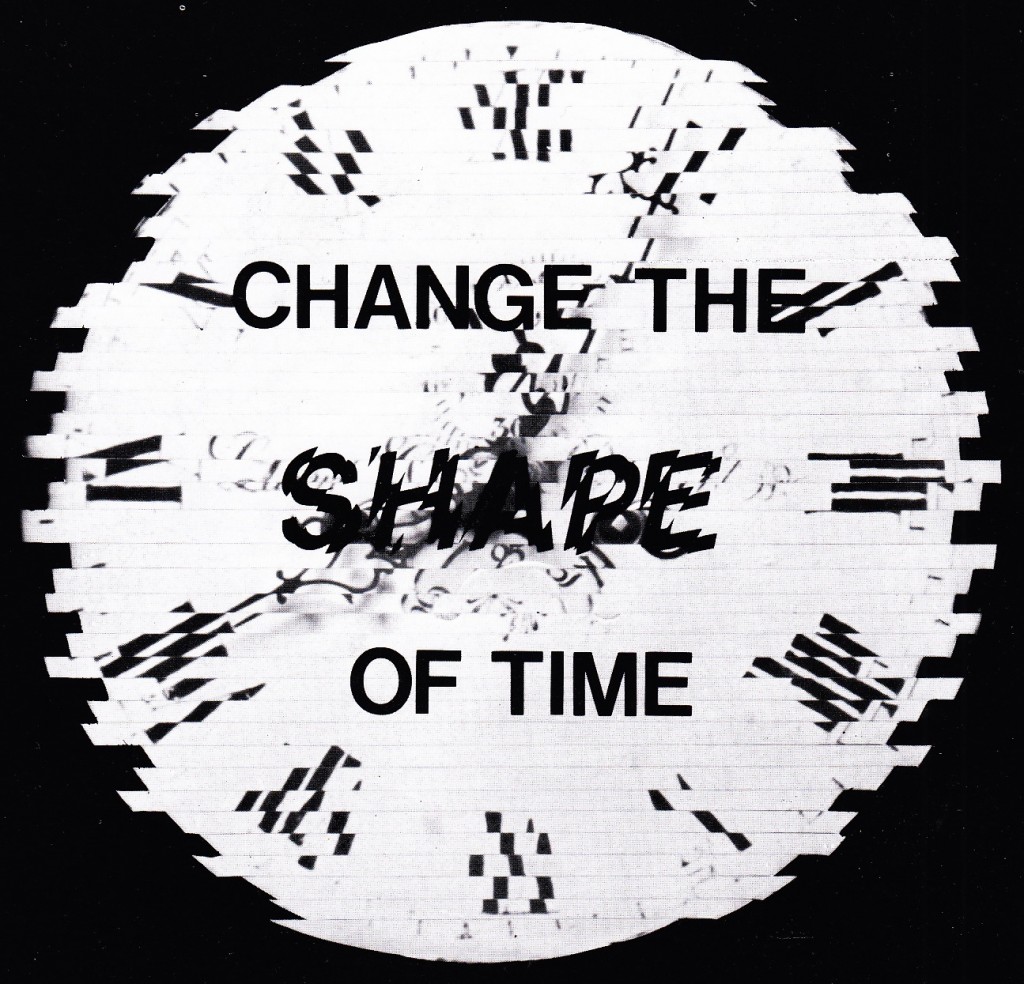 Download the original 4pp catalog for the ADR ‘TimeShape” effects module:
Download the original 4pp catalog for the ADR ‘TimeShape” effects module:
Pretty neat little unit that I’d been unaware of… basically a flanger with an inline limiter and an envelope follower.
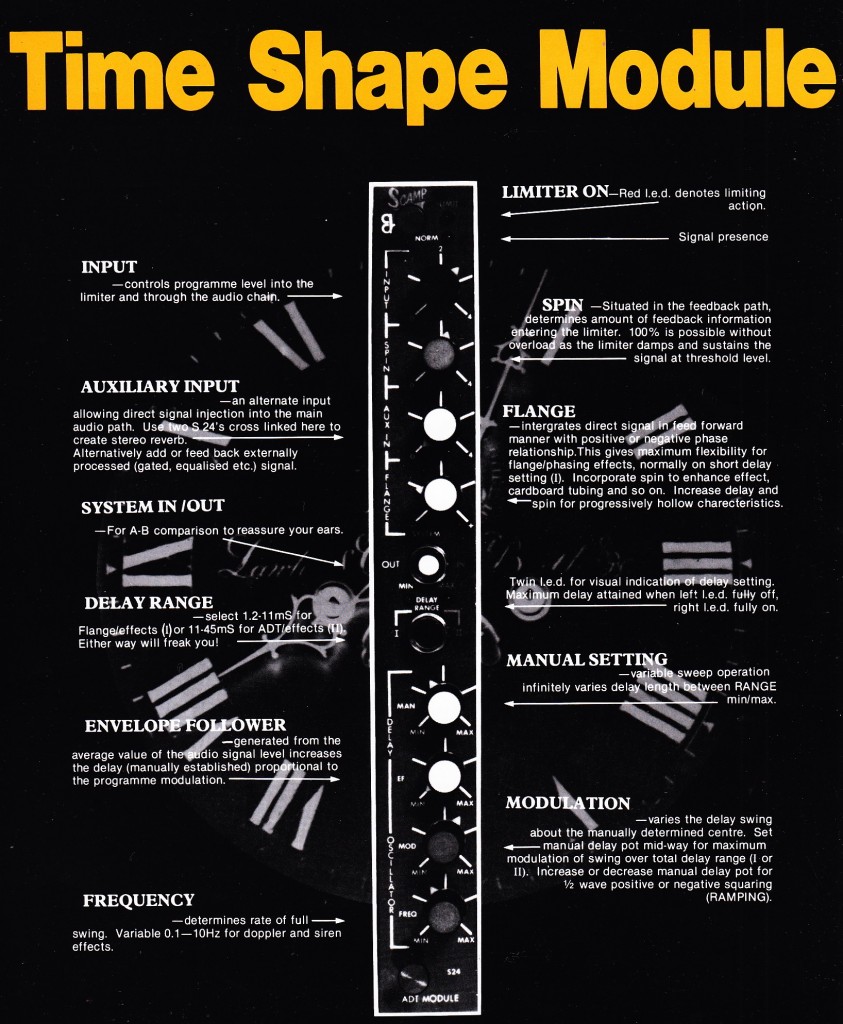 For info on the rest of the ADR Scamp series, click here…
For info on the rest of the ADR Scamp series, click here…
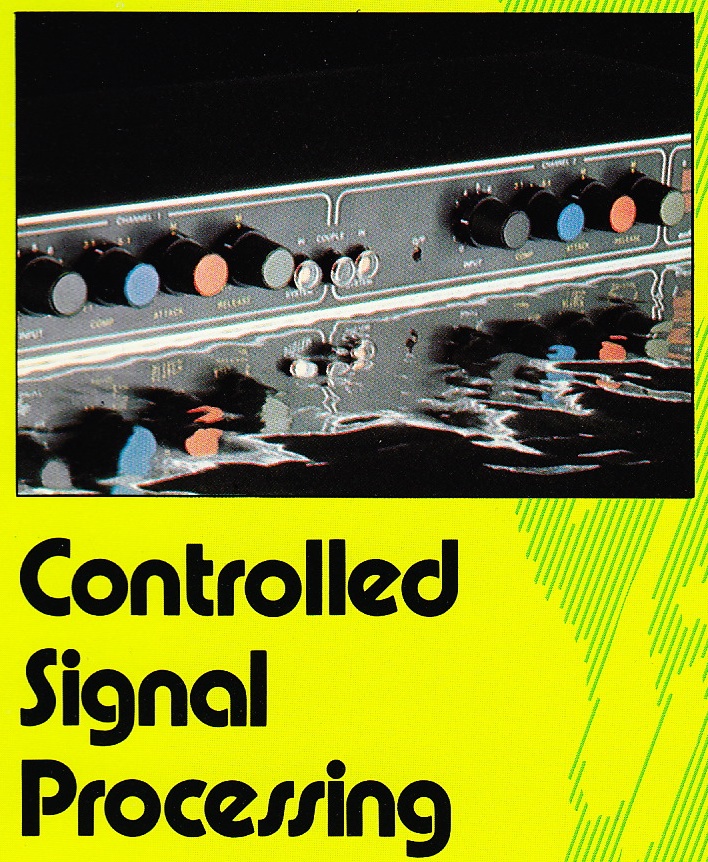 I was recently given hundreds of pages of Audio & Design (Recording) ltd. (hf. ADR) literature from the 1970s, and I’ll be uploading it over the course of… my lifetime, I suppose. Anyhow, here’s a package of original data sheets ETC on their rack-mount compressors of the era:
I was recently given hundreds of pages of Audio & Design (Recording) ltd. (hf. ADR) literature from the 1970s, and I’ll be uploading it over the course of… my lifetime, I suppose. Anyhow, here’s a package of original data sheets ETC on their rack-mount compressors of the era:
DOWNLOAD: ADR_comps_1979
AND – BONUS – a period essay regarding compressor-usage by founder M. Beville: Beville_ADR_Comps_77
Products covered, with text, specs, and images, include: ADR Gemini Compact (their ‘prosumer’ unit), Gemini East Rider, F690 ducking limiter, Compex compressor / expander, F600 broadcast limiter, FM Stereo Ex-press limiter, and Transdynamic processor.
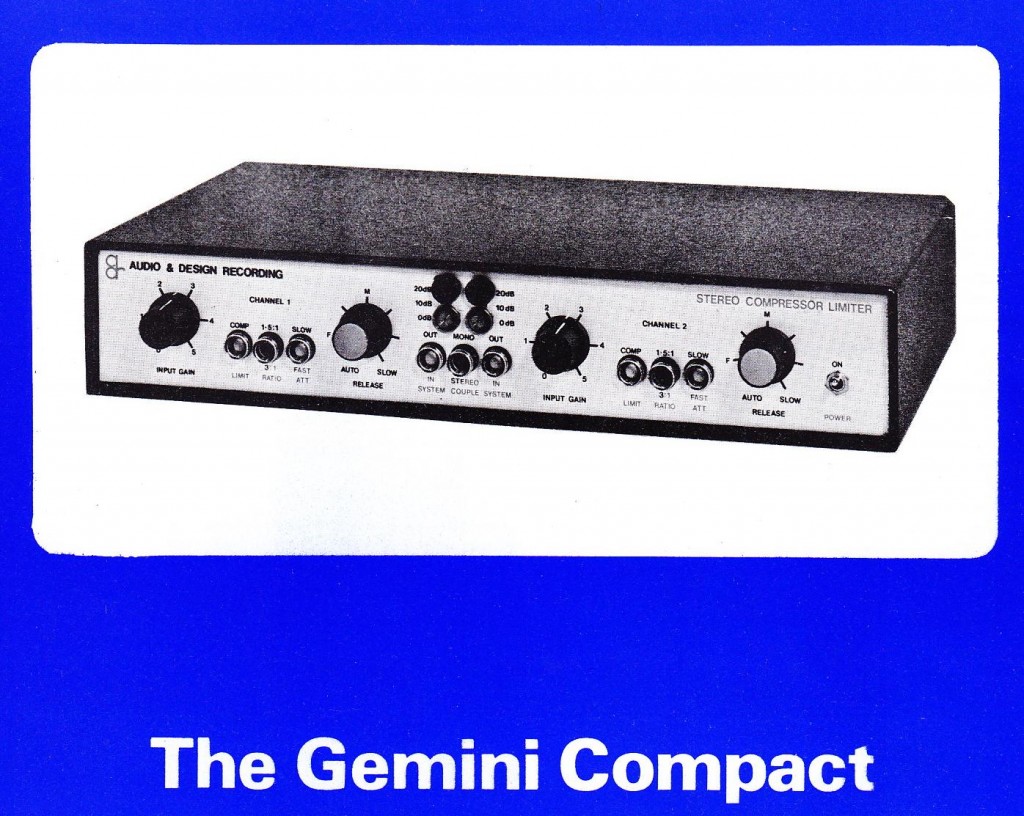



 We previously featured ADR’s ‘Scamp’ series of modular processors from the same era.. click here for that jazz…
We previously featured ADR’s ‘Scamp’ series of modular processors from the same era.. click here for that jazz…
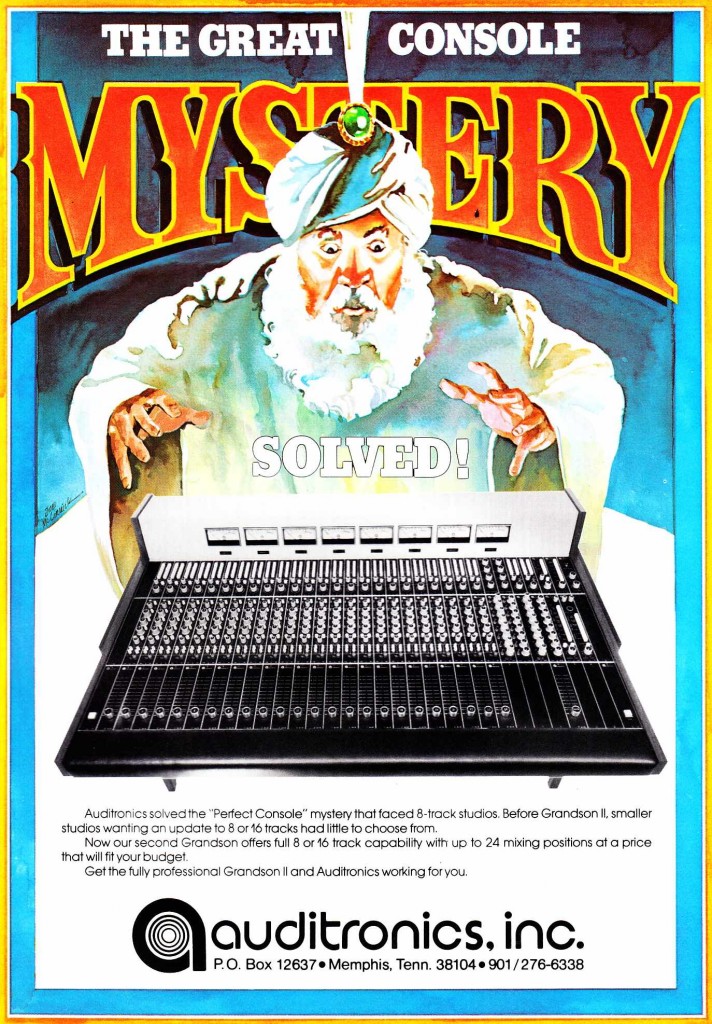 Above: the Audiotronics Grandson II console circa 1975
Above: the Audiotronics Grandson II console circa 1975
Way back in October of 2010 I ran a short piece about some 1970s audio consoles, and now 70s month rolls on with an extensive image gallery of some iconic and some obscure mixing desks from that decade. I’m a hardware mixer fan; I learned audio production in a studio with a Trident Trimix and my brain often just defaults to finding solutions and working-methods that are faster to do with a real console rather than via a DAW. I would never give up my Pro Tools, no way… but I honestly can’t imagine giving up the flexibility and endless options that a good-sounding, full-featured console offers. At Gold Coast Recorders, our Wheatstone SP6 has been going strong for two years now; I’ve had to replace the control room section due to a weird intermittent issue, but I since I had planned ahead and bought a spares-board it was pretty painless. If you look past the real fetish-brands like API and Neve (great stuff, no doubt) there are a million bargains to be had if you are able to do a little tech work (or pay a decent technician). I bought both of my SP6s for about $1500, TOTAL, with shipping, and put about 60 hours into arriving at a single great-functioning piece, fully cabled to my patchbays, and with a lifetime worth of spares. Considering that these SP6s cost around $40,000 each in the mid nineties, this is a pretty great deal. I guess I’d sum it up this way: if you record bands, if you have the physical room for a console, if you have the patience and/or where-with-all to do some basic troubleshooting, and the board is modular (very important….), I feel like you really can’t go wrong. Given the outrageous prices of vintage outboard gear on the market today, vintage consoles represent an amazing bargain. And a potentially amazing headache. So be careful.
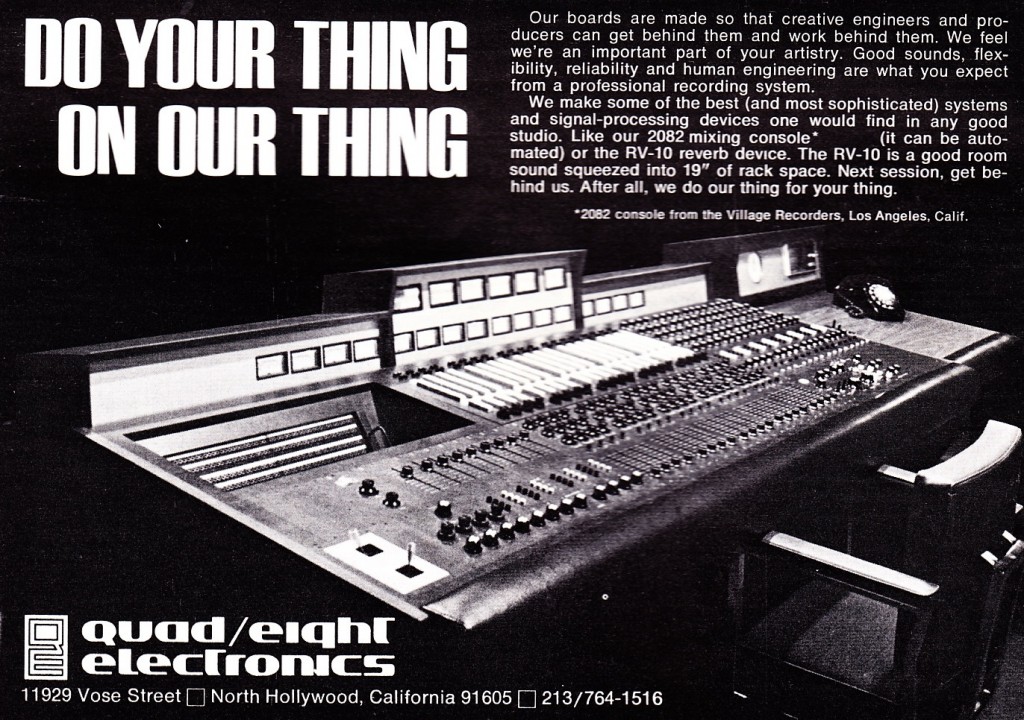 Above: Quad/eight 2082 console circa 1972
Above: Quad/eight 2082 console circa 1972
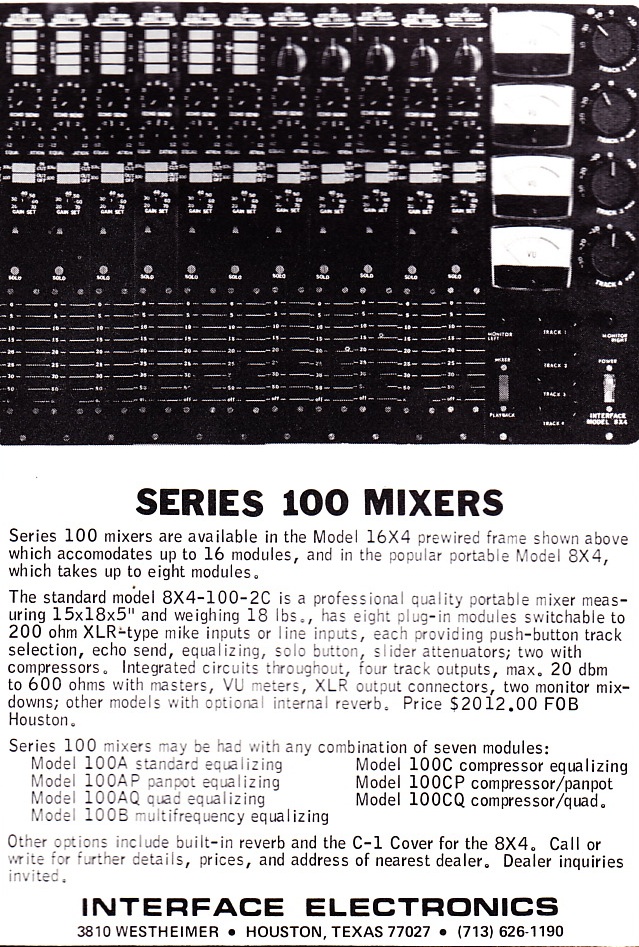 Above: Interface Electronics Series 100 console circa 1973
Above: Interface Electronics Series 100 console circa 1973
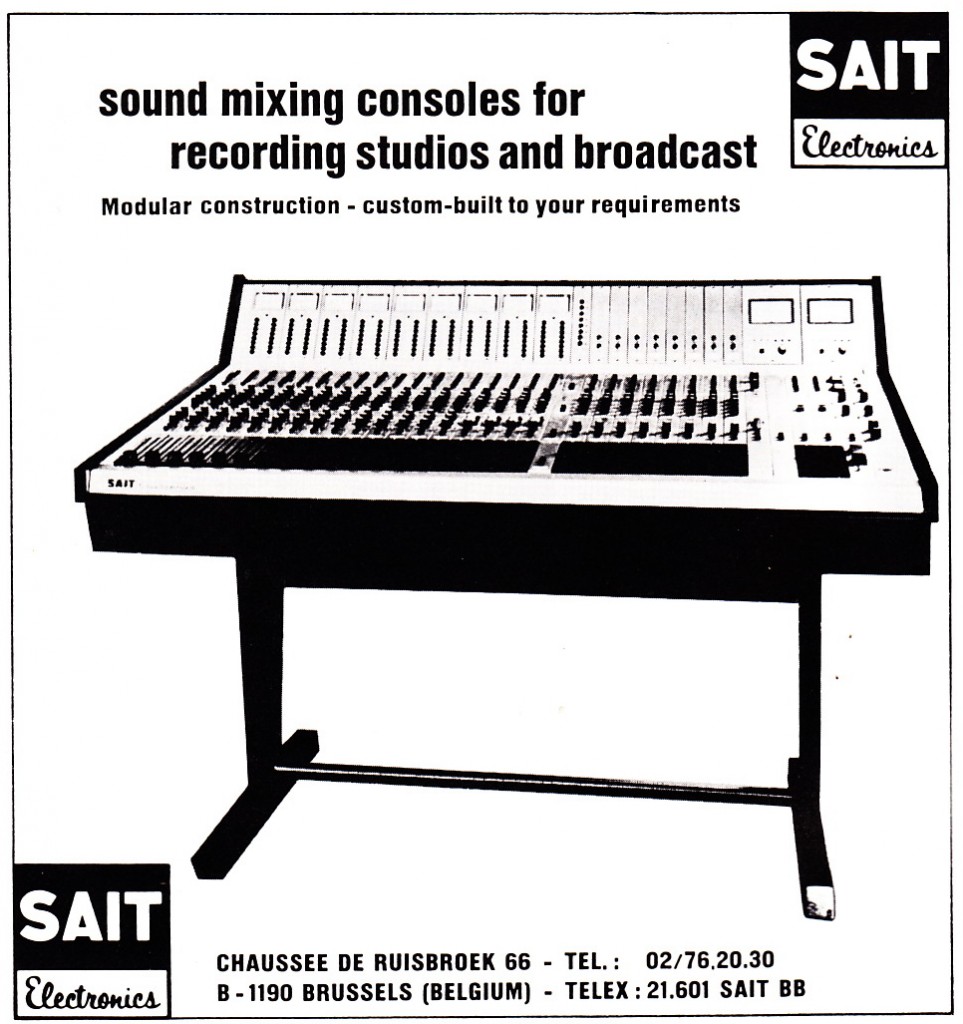 Above: Sait, a Belgium maker, offered this board in ’73
Above: Sait, a Belgium maker, offered this board in ’73
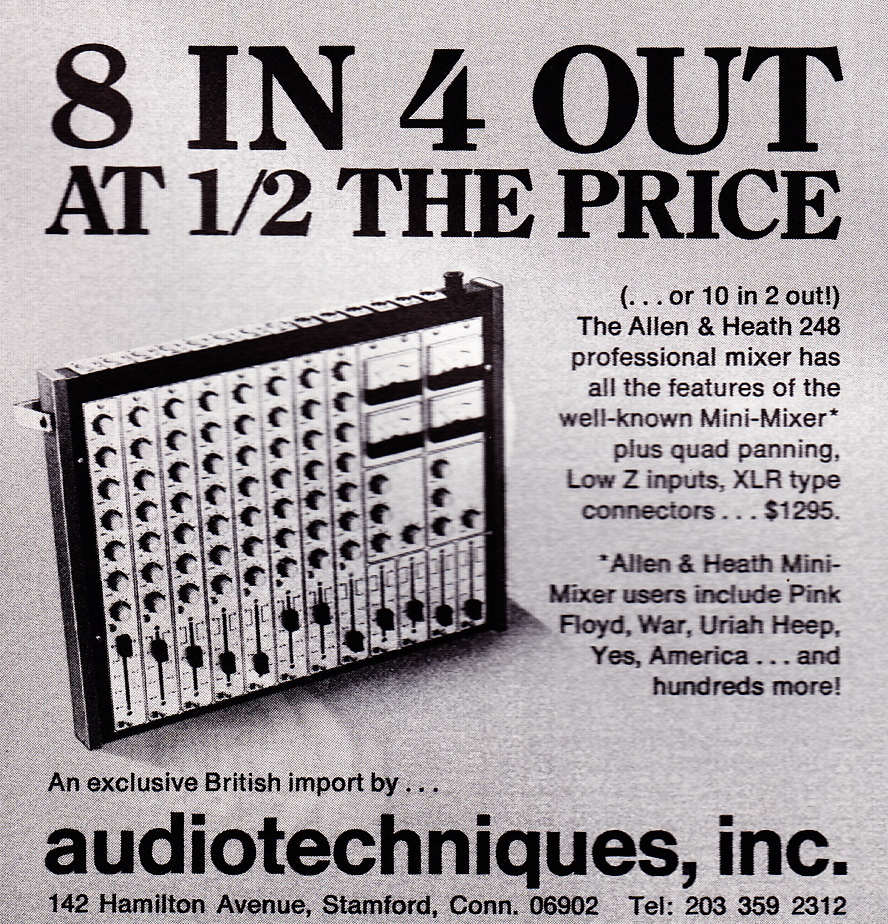 The Allen+Heath 248 portable mixer circa 1973
The Allen+Heath 248 portable mixer circa 1973
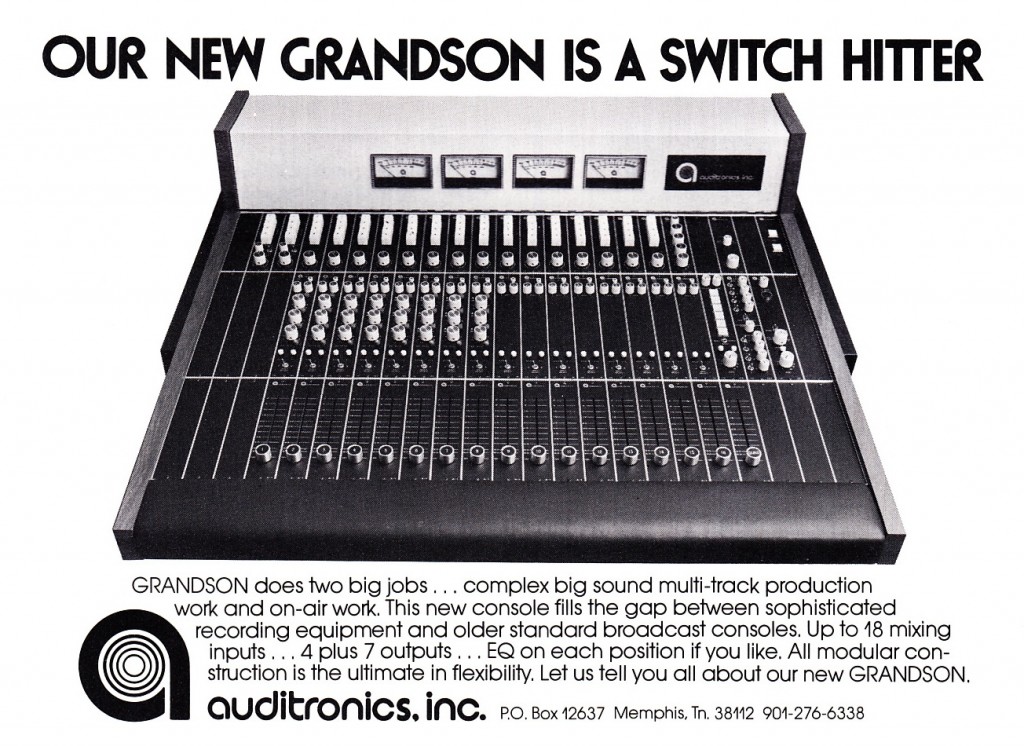 The earlier iteration of the Audiotronics Grandson, this one from 1973
The earlier iteration of the Audiotronics Grandson, this one from 1973
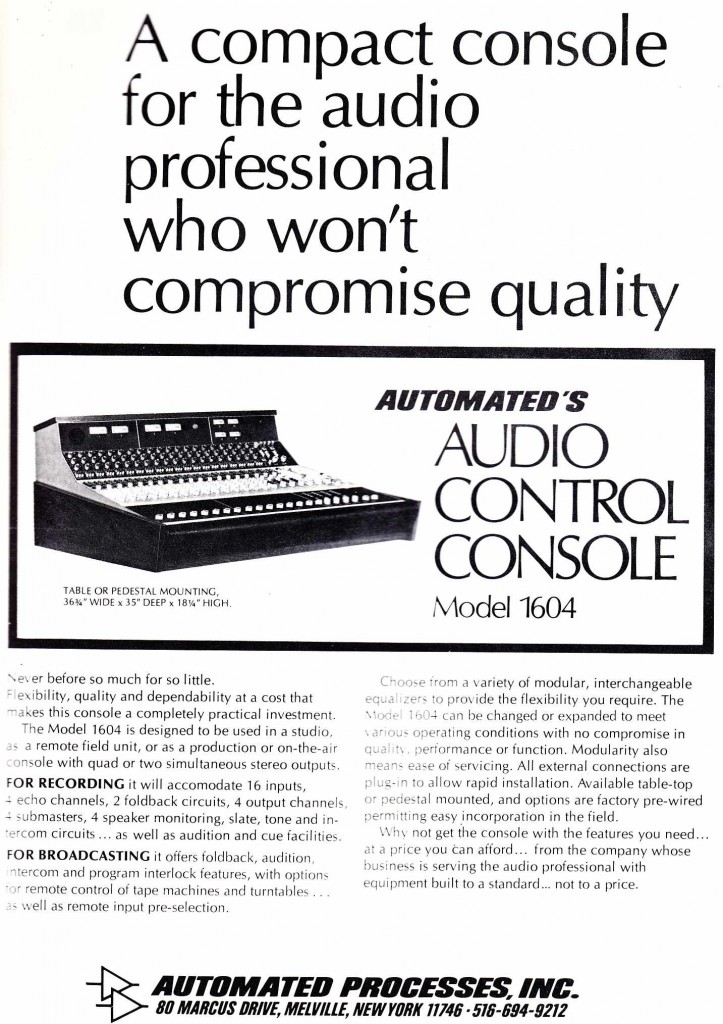 The API 1604 as-seen in 1974, and as still-seen in studios worldwide
The API 1604 as-seen in 1974, and as still-seen in studios worldwide
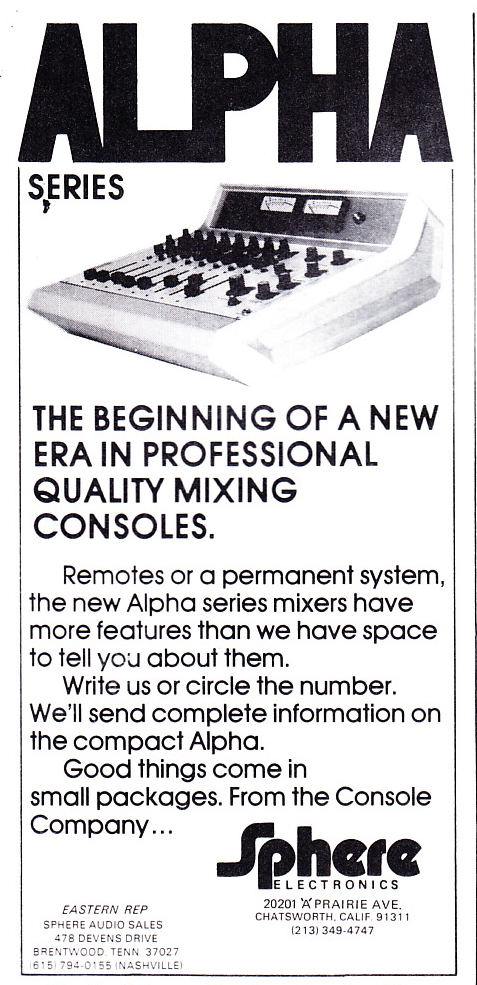 Sphere was a high-end console-maker that I know almost nothing about; here we see their ALPHA, a compact model from 1975
Sphere was a high-end console-maker that I know almost nothing about; here we see their ALPHA, a compact model from 1975
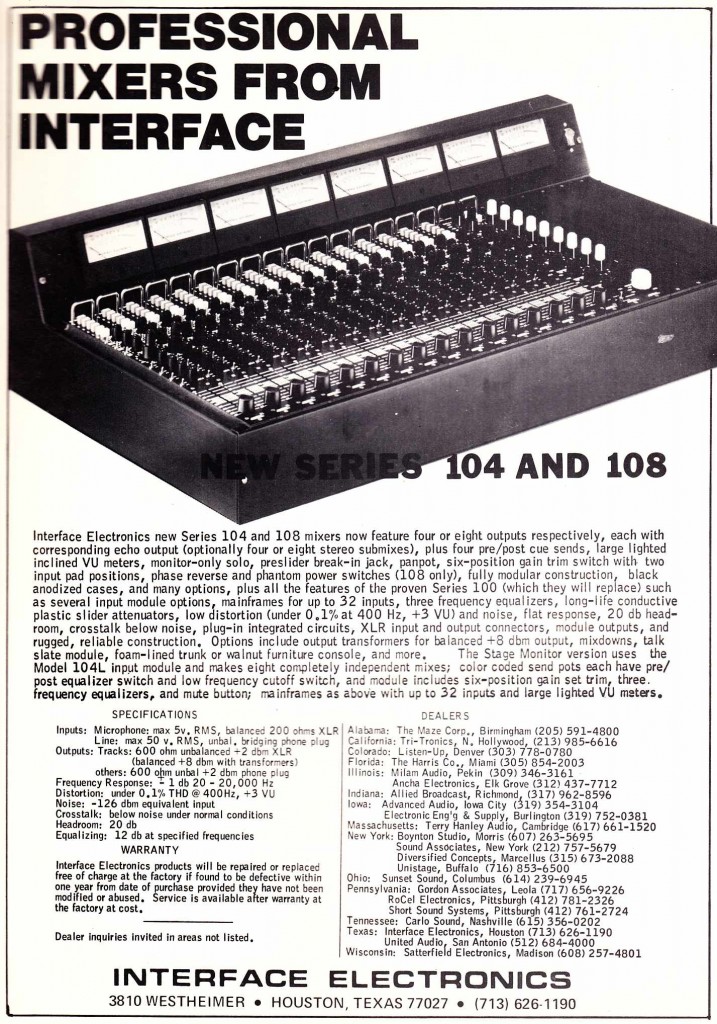 In 1976 Interface offered the 104 and 108 series consoles
In 1976 Interface offered the 104 and 108 series consoles
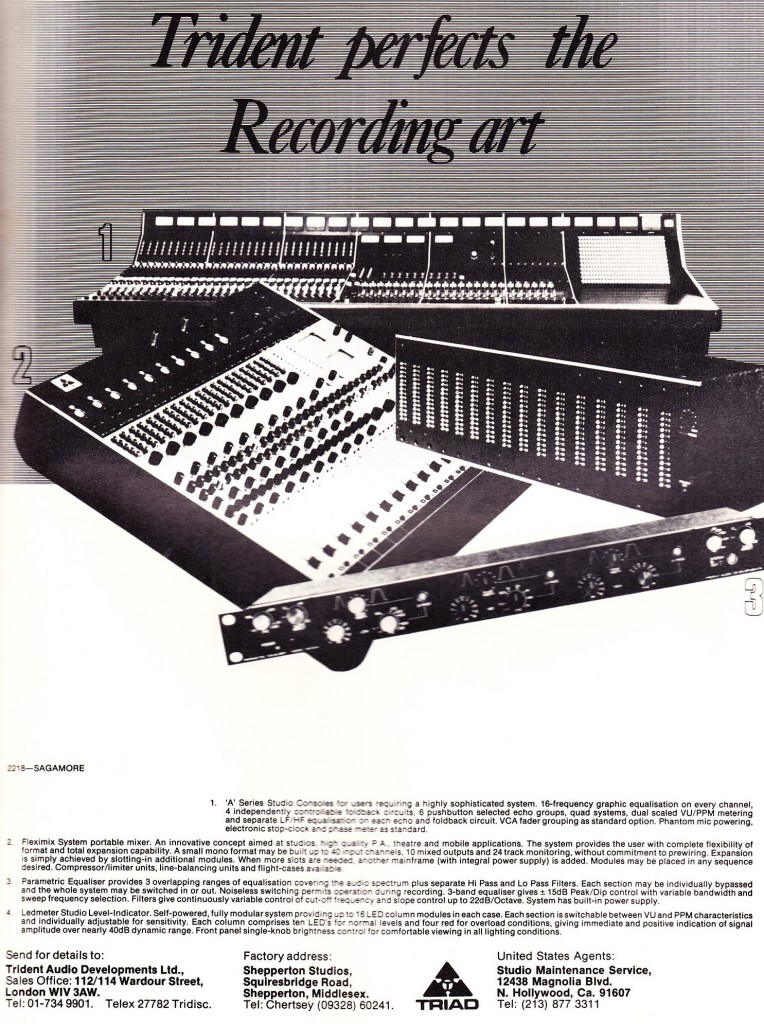 Above: the Trident range circa ’77. Apologies for the poor scan, I think I may need to invest in a new scanner. As I mentioned at the head, I learned on the Trident Trimix, which was a ‘portable’ unit (portable but still around 150lbs!) that was offered a bit later. I later learned the dark side of the Trimix is that… aside from the mic inputs, none of it is balanced and the signal-to-noise ratio is very poor. Which brings up a good point: before investing in one of these things, research the specs. What I hadn’t known then is that the Trimix was originally conceived of as a live console… designed especially for Queen, if I recall correctly…Anyhow, yes the EQ sounded amazing and the build quality was high but it was far too noisy for modern productions.
Above: the Trident range circa ’77. Apologies for the poor scan, I think I may need to invest in a new scanner. As I mentioned at the head, I learned on the Trident Trimix, which was a ‘portable’ unit (portable but still around 150lbs!) that was offered a bit later. I later learned the dark side of the Trimix is that… aside from the mic inputs, none of it is balanced and the signal-to-noise ratio is very poor. Which brings up a good point: before investing in one of these things, research the specs. What I hadn’t known then is that the Trimix was originally conceived of as a live console… designed especially for Queen, if I recall correctly…Anyhow, yes the EQ sounded amazing and the build quality was high but it was far too noisy for modern productions.
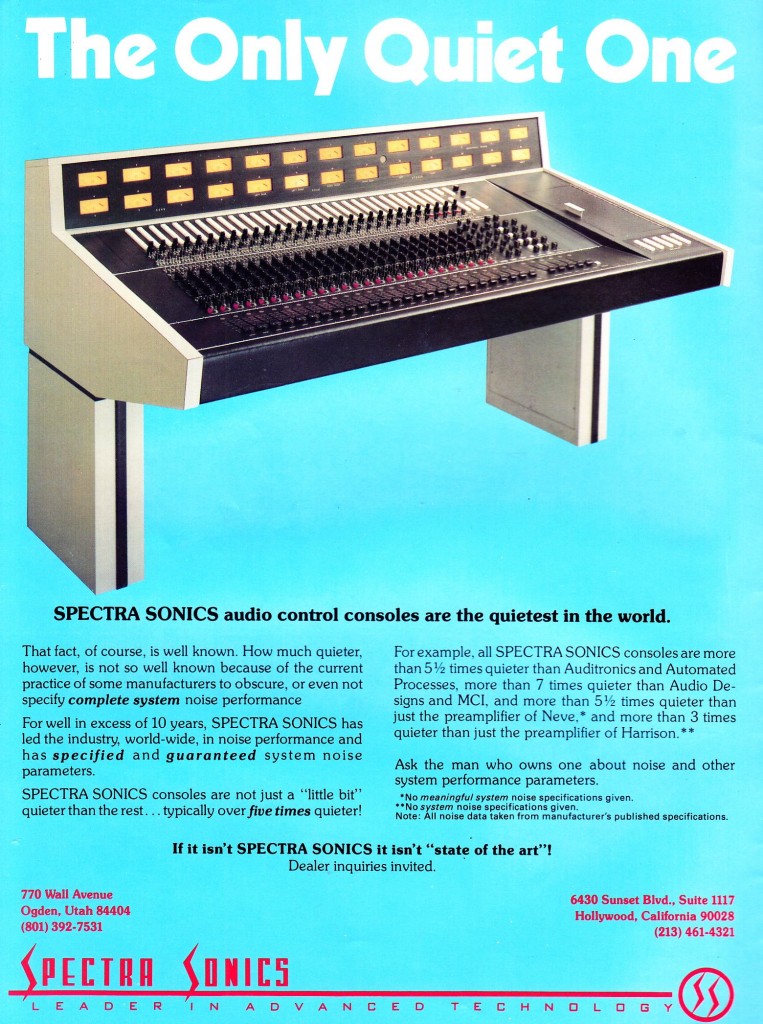 Above: Spectra Sonics console circa 1977.
Above: Spectra Sonics console circa 1977.
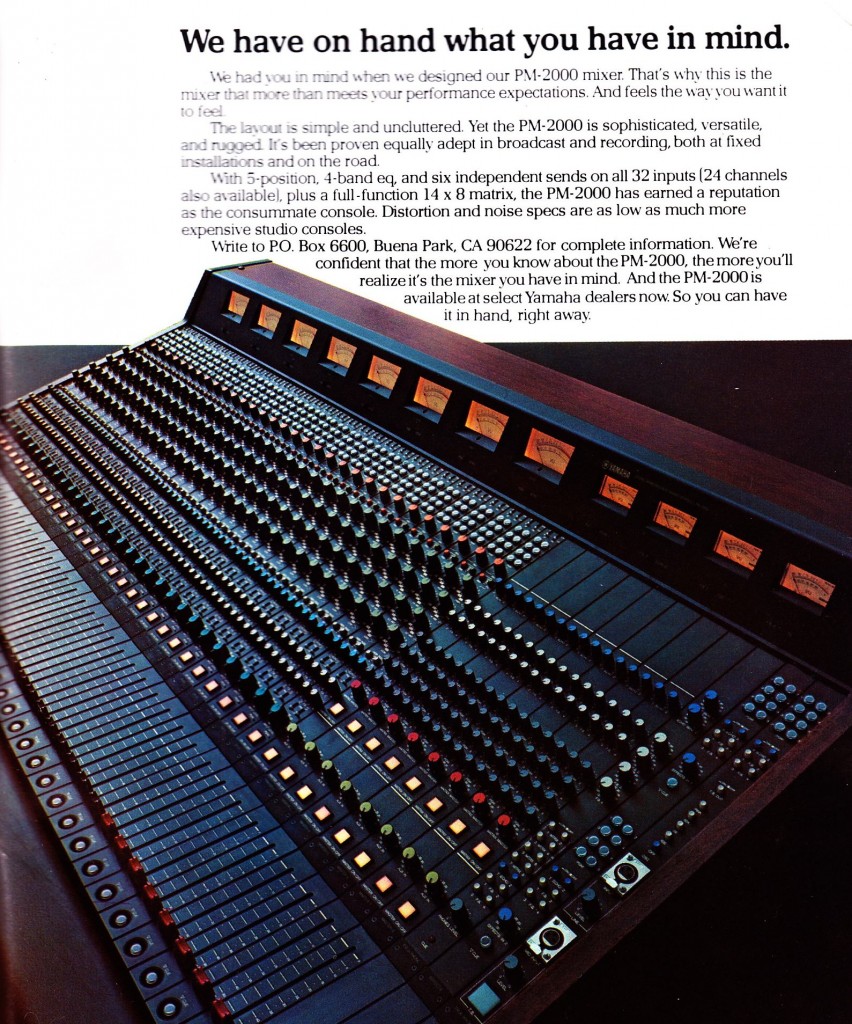 The Yamaha PM2000 of 1980, successor to the -“Japa-Neve” PM1000. And apparently even better? Weigh in…
The Yamaha PM2000 of 1980, successor to the -“Japa-Neve” PM1000. And apparently even better? Weigh in…
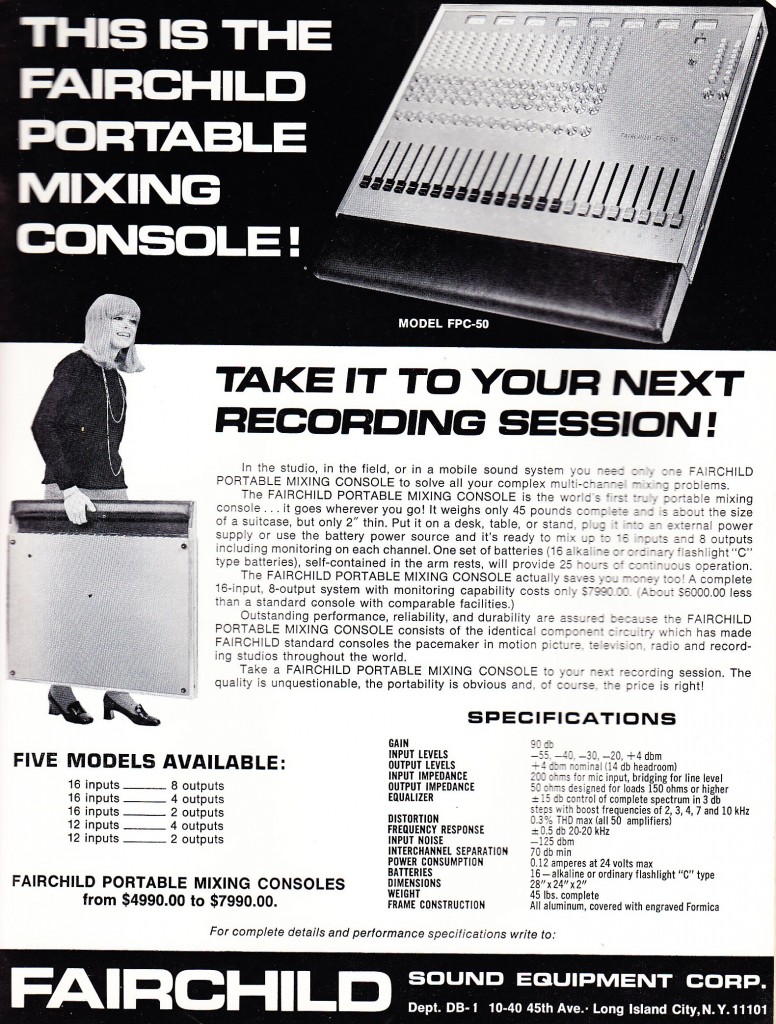 Here’s an unusual one: The Fairchild Portable Console of 1970, likely one their last pro-audio products. I have never seen one of these before. Anyone?
Here’s an unusual one: The Fairchild Portable Console of 1970, likely one their last pro-audio products. I have never seen one of these before. Anyone?
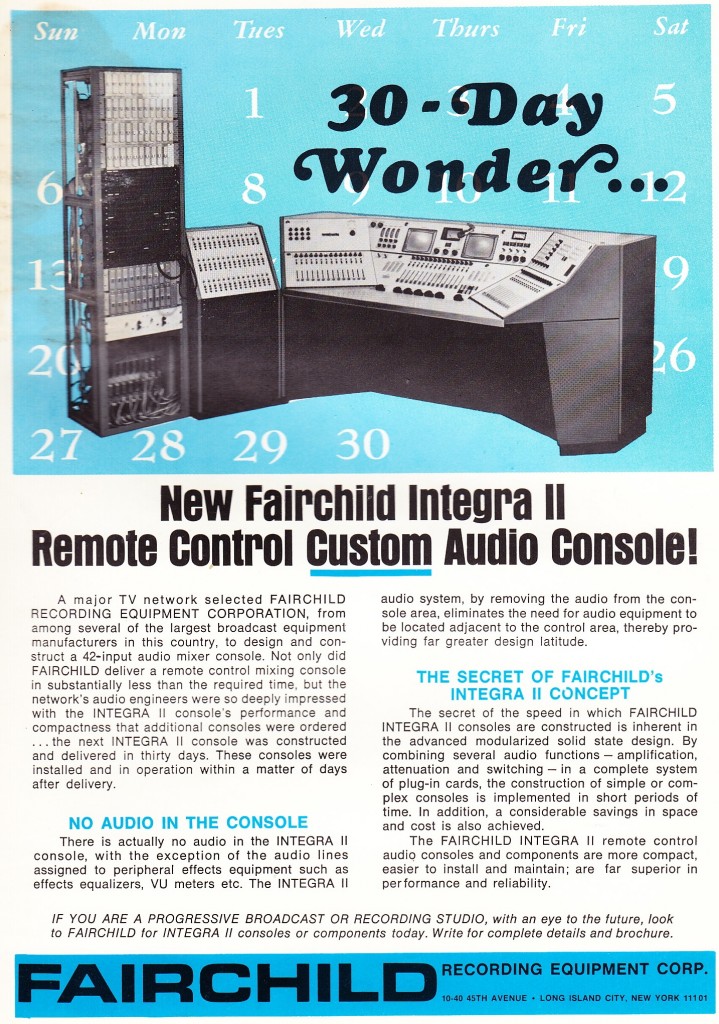 …and not quite the 70s, but… Fairchild introduces their INTEGRA console, 1968, with the bold notice “No Audio In The Console.” It’s pretty incredible how ahead of its time Fairchild was. Anyone ever use an INTEGRA? Did it sound good/work well? Bits and bobs from these monsters seem to surface on eBay all the time, but I doubt there is still a complete unit out there. Anyone?
…and not quite the 70s, but… Fairchild introduces their INTEGRA console, 1968, with the bold notice “No Audio In The Console.” It’s pretty incredible how ahead of its time Fairchild was. Anyone ever use an INTEGRA? Did it sound good/work well? Bits and bobs from these monsters seem to surface on eBay all the time, but I doubt there is still a complete unit out there. Anyone?
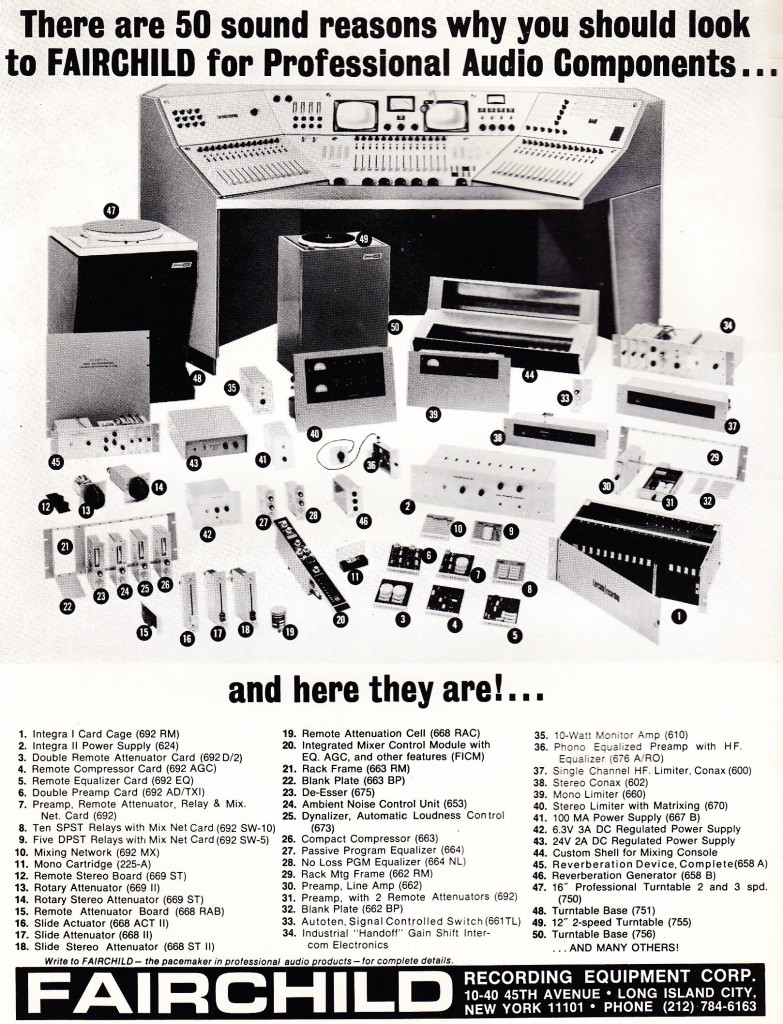 …and here’s a breakdown of all the aforementioned bits+bobs.
…and here’s a breakdown of all the aforementioned bits+bobs.
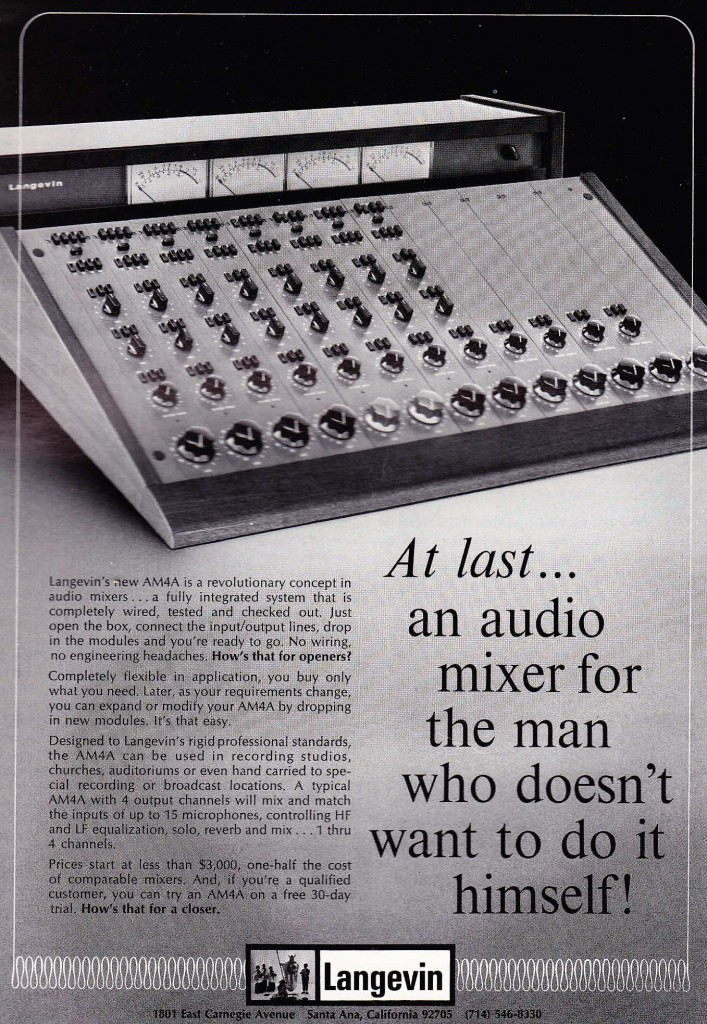 While all of the Fairchild Integras may have been carved up, the Langevin AM4A, certainly the opposite end of the technological spectrum, seems to have fared quite a bit better… I often see these on the market in the $10K range, and I have to admit I have often been tempted… Can any one tell us how these compare in terms of noise and response to a modern summing mixer? Anyone using these to mix thru?
While all of the Fairchild Integras may have been carved up, the Langevin AM4A, certainly the opposite end of the technological spectrum, seems to have fared quite a bit better… I often see these on the market in the $10K range, and I have to admit I have often been tempted… Can any one tell us how these compare in terms of noise and response to a modern summing mixer? Anyone using these to mix thru?
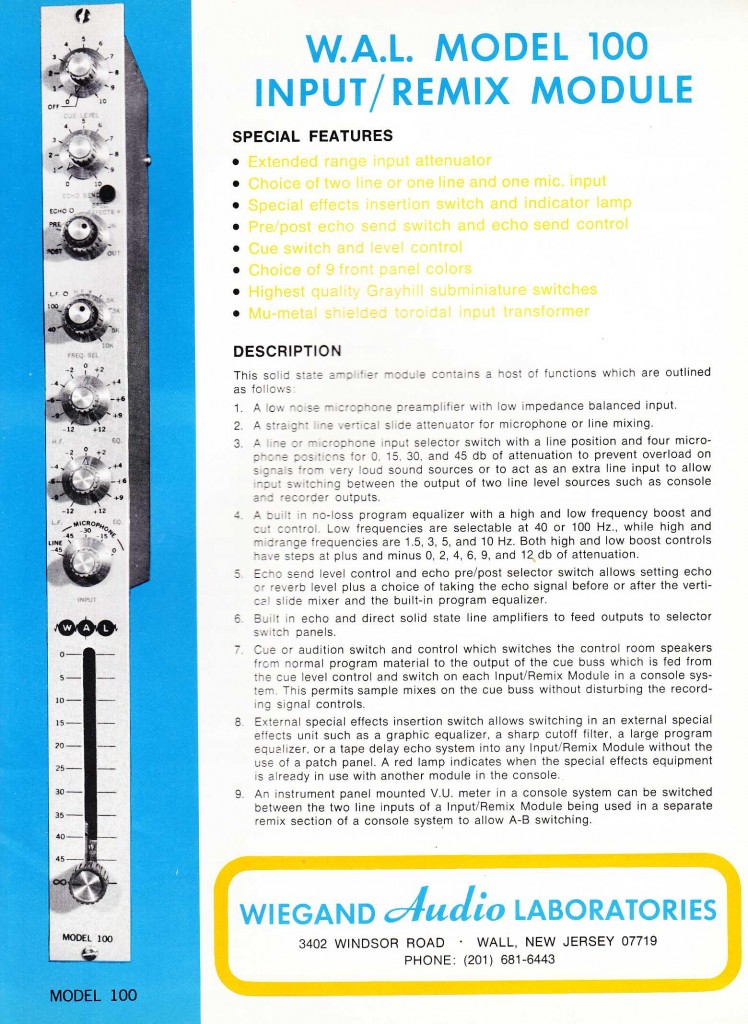 Wiegand Audio Labs offered their Model 100 channel strip in 1969
Wiegand Audio Labs offered their Model 100 channel strip in 1969
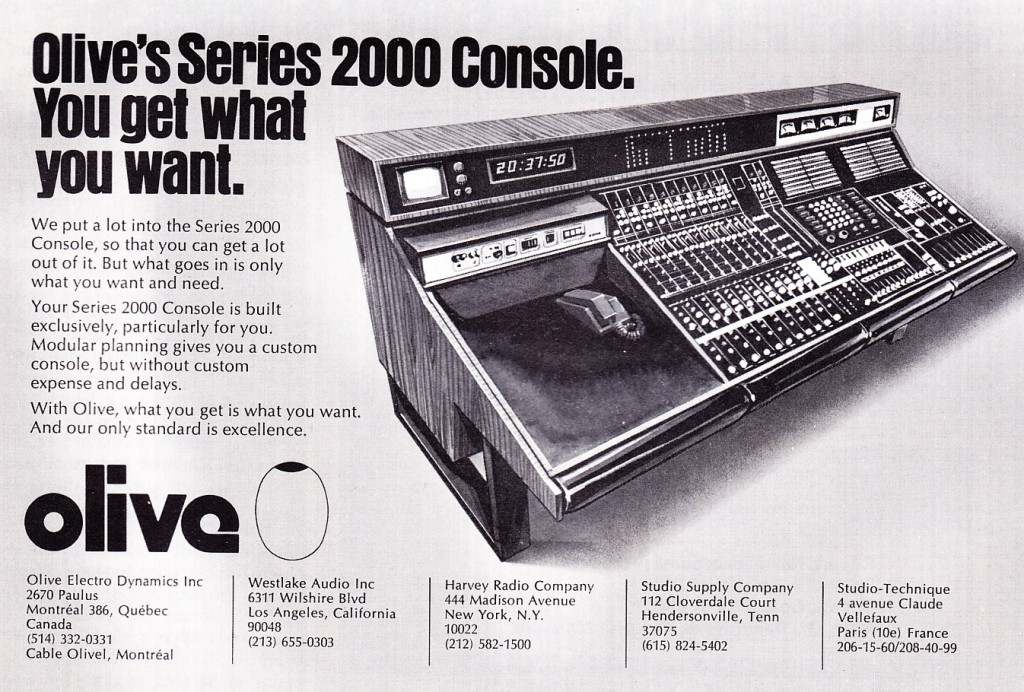 Montreal represent! I KNEW there had to be a Montreal maker of boards in the 70s… and sure enough, we find OLIVE. Here’s the Olive 2000 circa 1972. Seems lost-to-history… anyone?
Montreal represent! I KNEW there had to be a Montreal maker of boards in the 70s… and sure enough, we find OLIVE. Here’s the Olive 2000 circa 1972. Seems lost-to-history… anyone?
Much closer to Langevin than Fairchild, here we see the Altec 9300 circa 1970
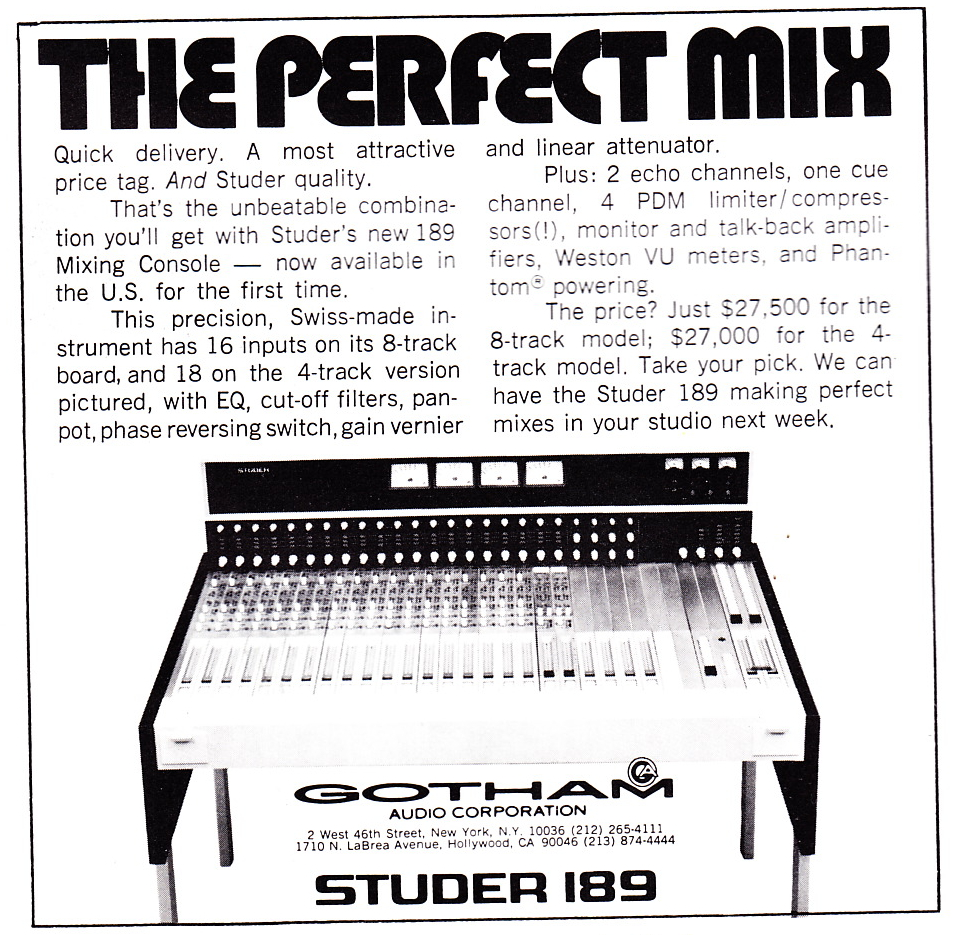 Above: Studer 189 circa 1972. Just $148,000 (no typo) 2013 dollars!
Above: Studer 189 circa 1972. Just $148,000 (no typo) 2013 dollars!
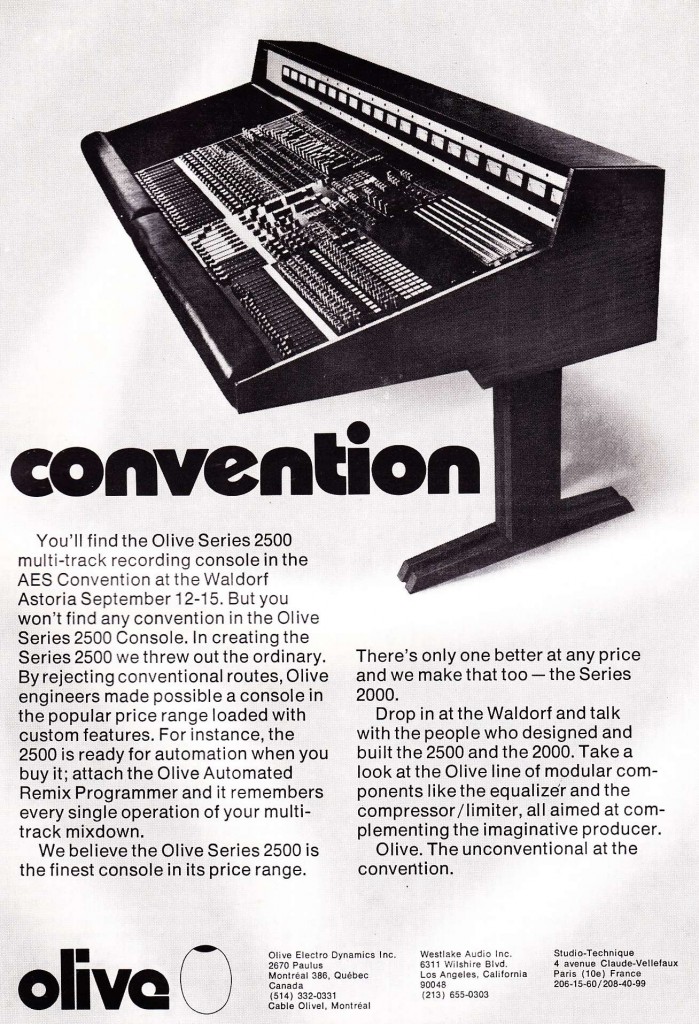 Olive also offered a 2500 model in 1972
Olive also offered a 2500 model in 1972
*************
*******
***
If any of y’all are actively using any of this stuff, write in and let the world know how they are in terms of sonics, reliability, and general utility. There is very, very little information online concerning some of these pieces, so you could end up being very helpful to some potential future user of these these machines…
In the account of his folk’s FINE RECORDING, INC., operation, Tom Fine mentioned the custom ADM console that was installed at the end of the 1960s. I stumbled across a period trade-ad announcing this installation and add it here to the stack. For the telling of the whole F.R.I. story, click here.
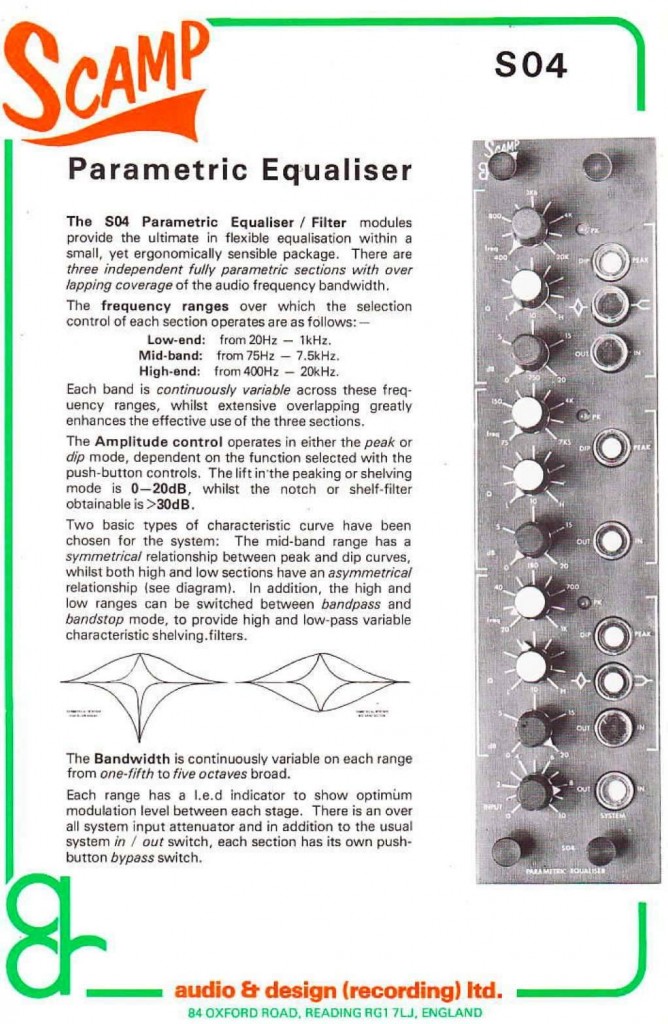 Audio + Design (Also known as Audio & Design, or Audio and Design, or Audio Design Recording- hf. ADR) is a British firm that was responsible for the first FET-based limiter. Their ‘Vocal Stressor’ dynamics processor has long been rumored to be the the kit limiter used on many Led Zeppelin recordings. For readers who have not spent much time in recording studios: John Bonham’s drum sound on the Zeppelin records is still, 40 years later, regarded as a benchmark of rock drum sound, by both drummers and producers/engineers. And by rock-music fans in general. A lot of time gets spent daily in recording studios around the world trying to ‘get that Bonham sound.’ So this rumor is somewhat significant.
Audio + Design (Also known as Audio & Design, or Audio and Design, or Audio Design Recording- hf. ADR) is a British firm that was responsible for the first FET-based limiter. Their ‘Vocal Stressor’ dynamics processor has long been rumored to be the the kit limiter used on many Led Zeppelin recordings. For readers who have not spent much time in recording studios: John Bonham’s drum sound on the Zeppelin records is still, 40 years later, regarded as a benchmark of rock drum sound, by both drummers and producers/engineers. And by rock-music fans in general. A lot of time gets spent daily in recording studios around the world trying to ‘get that Bonham sound.’ So this rumor is somewhat significant.
Other well-known users of the ADR compressors include Mike Chapman, producer of The Sweet and about a million other seminal 70’s groups.
Anyhow. The unit featured at the head of this post is module from ADR’s ‘Scamp’ line of plug-in modular audio processing equipment. From what I have been able to tell, various units in the Scamp line were available between at least 1976 and 1984. Modular racks of audio processing equipment were very popular during this period. The concept is a good one: users can purchase a single rack-case with slots that accept the manufacturer’s modules. The Rack-Case has a built-in power supply which provides the voltage(s) that the units need in order to operate. In this way, a single chassis/powersupply can support up to 17 pieces of processing gear, rather than each little compressor, EQ, etc., each having their own. Since the current draw of these items is so low, it makes a lot of sense. It saves a lot of space in the studio, and it saves money.
Of the other contemporary manufacturers of modular processing set-ups, The DBX 900 series is perhaps the most widely-seen. Valley People, Aphex and API also made these types of product lines. The API 500 series has survived, and in fact become a contemporary standard in recording studios, with dozens of independent firms currently making a huge variety of processing units to fit the API-500 spec frame/voltage. I have a DBX 900 rack and an API 500 rack, and they are some of my most-often used pieces in the studio.
There is a lot of documentation on the web regarding the DBX 900 series and the API 500 line. The ADR Scamp line-up is not as well-represented. Click on the link below to download 18-pages of 1976-1984 SCAMP paper.
DOWNLOAD: